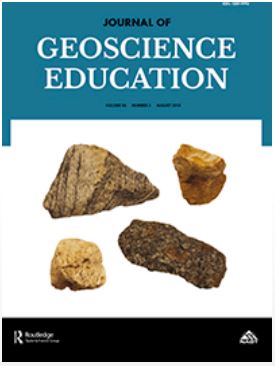I’m still in Montana hunting for dinosaurs, but as we are delayed by rain this morning I thought I’d take a moment to post about the first published paper to come out of my dissertation work. This paper describes a study conducted over 4 semesters in which I pre-post tested geology students on concepts related to geologic time and rates in a variety of courses including Physical Geology, Historical Geology, Structural, Geomorphology, and Geology Field Camp. I was interested in seeing how students conceptions related to ideas of geologic time and rates vary at different times in their academic journey as geology students.
I won’t spoil the ending, but if you’re curious to read more about the work, The abstract is below or you can head to the Journal of Geoscience Education for the full article.
ABSTRACT
Past research has evaluated how pre-service teachers, high school students, and introductory college students conceptualize geologic or deep time. The ability to think on geologic timescales is regarded as an important skill in the study of geology, yet little work has specifically addressed how student understanding of this concept evolves during the undergraduate experience and beyond. We describe an exploratory, pre-experimental study conducted at a large research university investigating student knowledge of various Earth history and geologic time concepts among geology majors. A 21-question pre/posttest was constructed to assess concepts related to landscape identification, landscape formation rates, Earth history, the geologic timescale, and relative and absolute dating. Pre/posttesting was conducted across four semesters within a variety of courses including historical geology, structural geology, geomorphology, and a geology field camp course. Data were also collected from a group of nonmajors in an introductory physical geology course to obtain a novice score and from a group of faculty expert geoscientists at the Geological Society of America annual meeting to obtain an expert score on the instrument. Additionally, interviews were conducted with 11 senior geology majors to gain a deeper understanding of their conceptions related to a sample of the concepts assessed. Results show that students make the largest gains after taking physical and historical geology courses, but no significant changes were seen in upper-level geology courses. Many geology students lacked familiarity with the geologic timescale and had difficulty estimating formation rates of landscapes formed on intermediate timespans.


Leave a Reply
You must be logged in to post a comment.